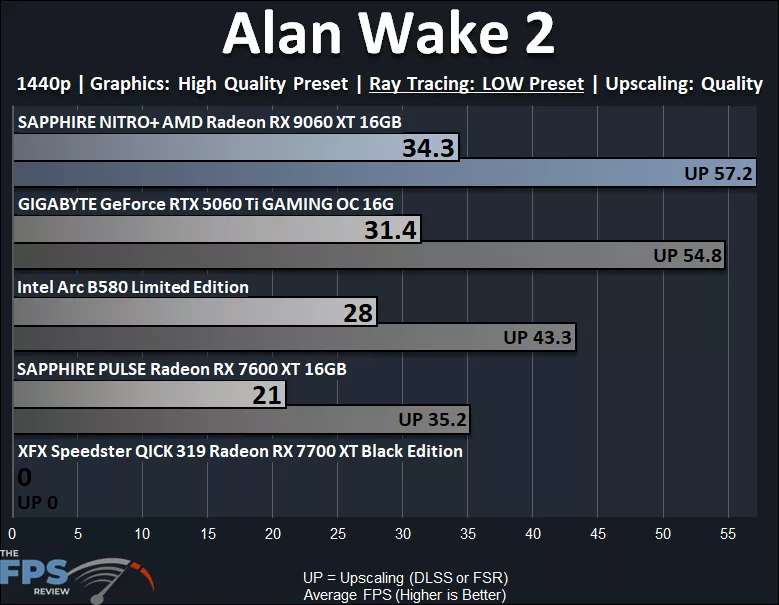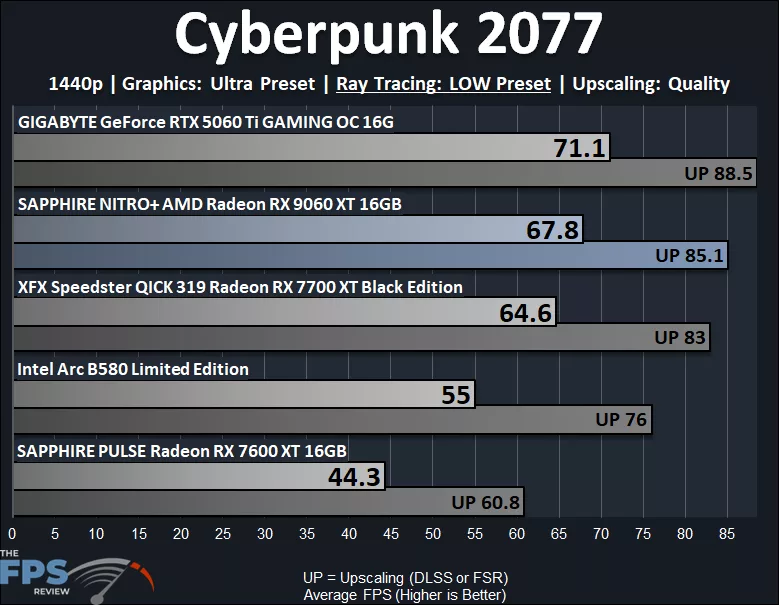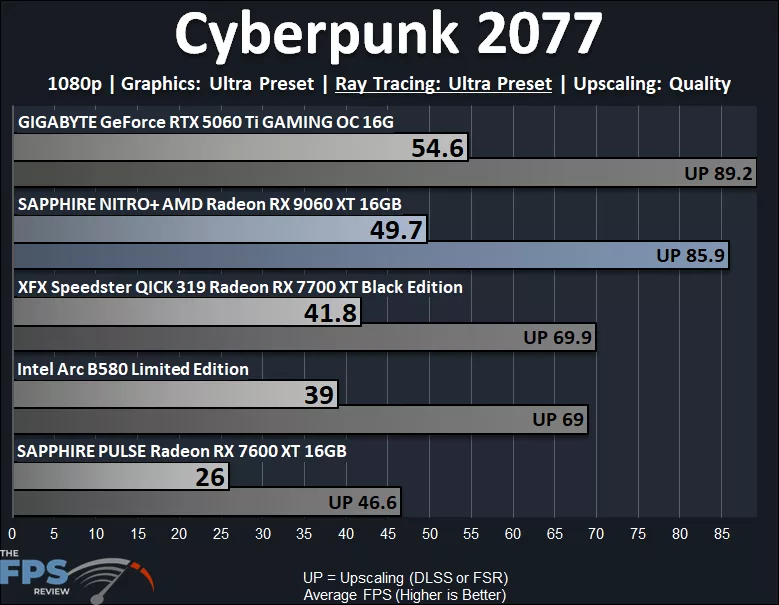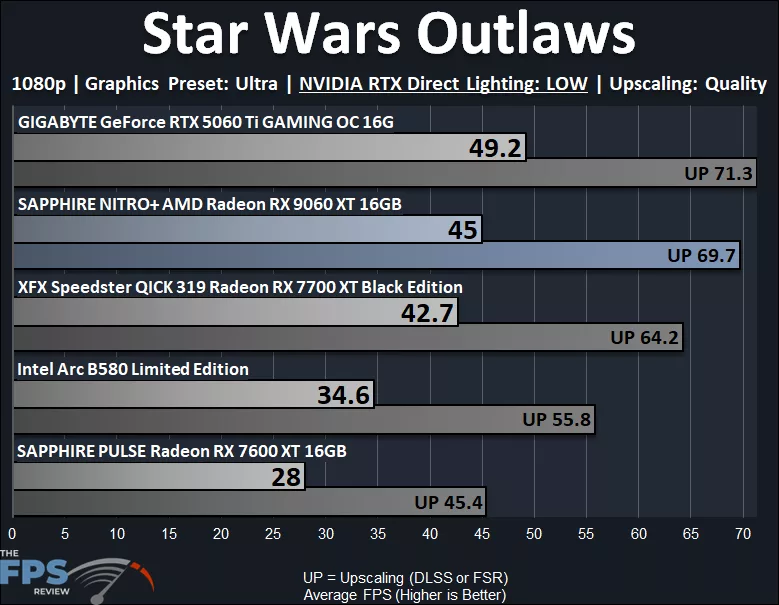Gameplay Performance – Ray Tracing Specific
On this page, we will look at ray tracing-specific settings in games turned on. While some of the games on the previous page run with ‘always on’ ray tracing now, there are other games that we can turn on ray tracing in the traditional sense, so we’ll explore that on this page. All the games on the previous page already that use ray tracing are: Clair Obscur: Expedition 33, Doom: The Dark Ages, Indiana Jones and the Great Circle, Kingdom Come Deliverance II, and Star Wars Outlaws. All games are tested in native resolution as well as upscaled performance using the relative “quality” upscaling option. Because ray tracing is more intensive, we will show some 1440p and some 1080p testing below.
Note that every video card being used for comparison is a factory overclocked video card: the Radeon RX 9060 XT, the GeForce RTX 5060 Ti, and the Radeon RX 7600 XT. Only the Intel Arc B580 LE is a reference clocked card.
Alan Wake 2

In Alan Wake 2, we are kind of pushing things beyond their playable limits here at 1440p native resolution. We have enabled just the “Low” ray tracing option in the game, just the low one, and well, nothing is playable without upscaling. Only two cards are actually playable though with upscaling, and one is the new SAPPHIRE NITRO+ Radeon RX 9060 XT and the other is the GeForce RTX 5060 Ti 16GB OC video card. Yeah, we actually got faster performance with the SAPPHIRE NITRO+ Radeon RX 9060 XT using Ray Tracing in this game compared to the GeForce RTX 5060 Ti. The SAPPHIRE NITRO+ Radeon RX 9060 XT was 9% faster than the GeForce RTX 5060 Ti 16GB OC video card! The upscaling performance is better as well, giving a smoother experience at 1440p using RT.
We did have an issue with the Radeon RX 7700 XT, it refused to work properly. We would start the level, and about 15 seconds in, it would consistently lock up and error out of the game, so it just wasn’t possible to get a run-through with it. However, in the brief time it ran, about 10 seconds, the FPS counter was around 31 FPS, so it is looking like the Radeon RX 9060 XT is faster than the 7700 XT in this game with Low RT enabled.
Cyberpunk 2077

In Cyberpunk 2077, we are going to look at two resolutions and ray tracing settings. First up is at 1440p with the “Low” RT preset. Well, look at that, the SAPPHIRE NITRO+ Radeon RX 9060 XT can provide a playable experience with Low RT at 67FPS native resolution 1440p! The SAPPHIRE NITRO+ Radeon RX 9060 XT is also faster than the Radeon RX 7700 XT by 5% as well. It is, though, slower than the GeForce RTX 5060 Ti by 5%.

We also wanted to push Ray Tracing hard, so we lowered the resolution to 1080p and enabled “Ultra” Ray Tracing. The game is not playable at native 1080p, but with upscaling it is. The SAPPHIRE NITRO+ Radeon RX 9060 XT is a pretty big 19% faster than the Radeon RX 7700 XT, showing the improvements in RT here with RDNA 4. Though it is still 9% behind the GeForce RTX 5060 Ti 16GB OC.
Star Wars Outlaws

Even though Star Wars Outlaws already runs ray tracing at all times, there is an additional option to enable more ray tracing using the NVIDIA RTX Direct Lighting option. We enabled this at “Low” quality at 1080p. This option is very demanding, even on Low, and the game isn’t playable without Upscaling. The SAPPHIRE NITRO+ Radeon RX 9060 XT is faster than the Radeon RX 7700 XT by 5% but slower than the GeForce RTX 5060 Ti by 9%.
